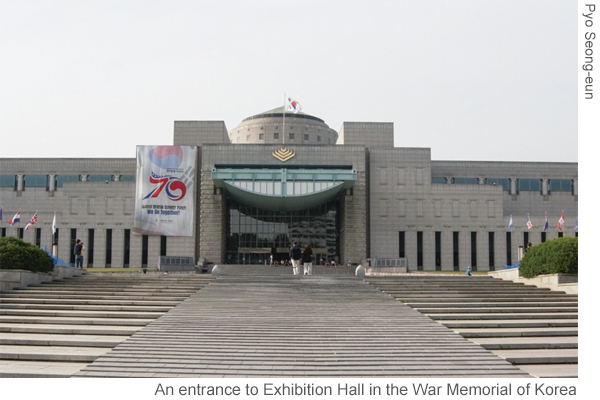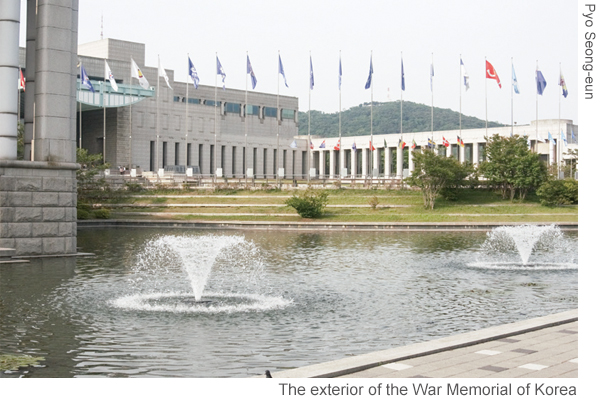
The Historical Background
On June 25, 1950, the Korean War broke out when North Korean forces launched an invasion across the 38th parallel into South Korea. The war broke out as each different government took hold in South Korea and North Korea. Merely three days after the invasion, South Korea lost its capital Seoul to North Korean forces. As the North Korean troops ignored the peacekeeping efforts of the United Nations (UN) and continued to carry out military action, the UN decided to send troops to South Korea to fight against them.
After three months, South Korea and the UN forces were able to regain the capital city, thanks to Operation Chromite, well-known as Inchon Landing. Chinese military forces also joined the war to support North Korea as the UN forces had been advancing north. During these tensions and subsequent battles, Seoul was captured four times. The conflict ended on July 27, 1953, with the signing of the Korean Armistice Agreement. The war devastated both North and South Korea, and both suffered major damages in economy and facilities. Since then, 70 years have passed, and Korea continues to be the only divided nation in the world.

Amazing 70
In February, 2023, The Ministry of Patriots and Veterans Affairs (MPVA) began the commemoration business in earnest, to celebrate both the 70th anniversary of the armistice agreement and the alliance between South Korea and the United States. The U.S. propelled the realization of the “ROK-U.S. alliance moving forward into the future,” thus celebrating the 70th anniversary of the alliance as the ally that contributed to the stabilization and the economic development of the Korean peninsula. The theme of the business is Amazing 70, the astonishing 70th anniversary through dedication. MPVA pushed ahead with this initiative to express gratitude for the devotion of many war veterans. The project intends to share the worth of liberty with the world and the remarkable growth of the country after the war, and making the nation and its 22 combatants feel proud.
For the first formal event of the initiative, Korea’s Demilitarized Zone (DMZ) was unveiled through an online exhibition in collaboration with Google. The historical background and beautiful nature of DMZ were introduced in 500 ways. In March, approximately 30,000 people participated in the 2023 Seoul Marathon and ran with the official brand of Amazing 70 on their chest. Moreover, in April, the Bicycle Alliance Road event was held to commemorate the great dedication of UN veterans.
MPVA organized various other events and activities, including the selection of 10 Korean War Heroes and the restoration of the remains of Hwang Ki-hwan, a Korean independence fighter. His life came into the spotlight as the real-life model of the protagonist in the historical drama Mr. Sunshine. The MPVA also gave new uniforms to every veteran of national merit engaged in the Korean War. Several other meaningful projects have been planned so that the future generations remember not only the great dedication but also the historical significance of the armistice of the Korean War.
Is 2023 the 70th Anniversary of the Armistice or the Ceasefire?
Meanwhile, the 70th anniversary also raises a fundamental question on whether this anniversary is a celebration of the “armistice agreement” or the “ceasefire.” These two terms are fundamentally different as the former indicates the complete end of the war, whereas the latter refers to a temporal discontinuity. It is true that this year marks the 70th anniversary of the ceasefire as both South Korea and North Korea accepted the conditions of the armistice. Though it was never officially declared, the government of South Korea has used the term, the 70th anniversary of the ceasefire of the Korean War. In fact, the two terms have been frequently used since the end of the war due to the difficulty in translating armistice documents. There are several interpretations regarding this issue.
One interpretation of the document is that the Rhee Syng-man government had taken advantage of the meaning of the word armistice. As previously mentioned, the two words have different meanings: an armistice is a cessation of combat action, and a ceasefire indicates a state in which hostilities are temporarily halted while the war continues. The Rhee Syng-man government, asserting the unification of the north, used the term ceasefire to emphasize that the war was not over.
Contrarily, some view a ceasefire as a state more advanced than an armistice. A combined application, in other words, is a misconception that occurred in the process of translation, which are homophones in Korean. According to this view, an armistice is just a step prior to a ceasefire. The transient armistice of July 1953, therefore, developed as a constant ceasefire through several processes such as the ROK-US mutual defense treaty. There is also a perspective that suggests that both terms can be used depending on individual political tendency, whether the person is a leftist or a rightist.

The End of the War
North Korea and South Korea are still in a state of truce; both countries allocate considerable budgets for their safety. However, most people believe that there should be no more war. In honoring and appreciating the great sacrifice of the veterans, it is necessary to make an effort to prevent another war for successive generations.
Pyo Seong-eun
sepyo1@uos.ac.kr

